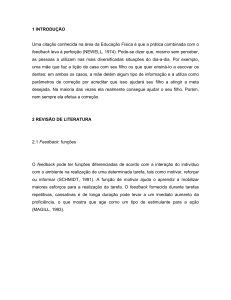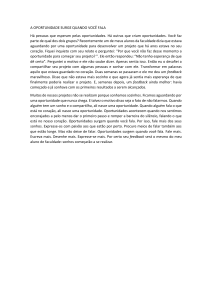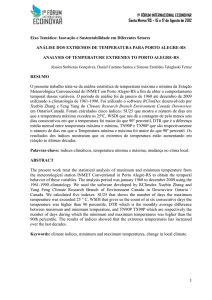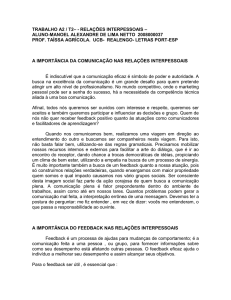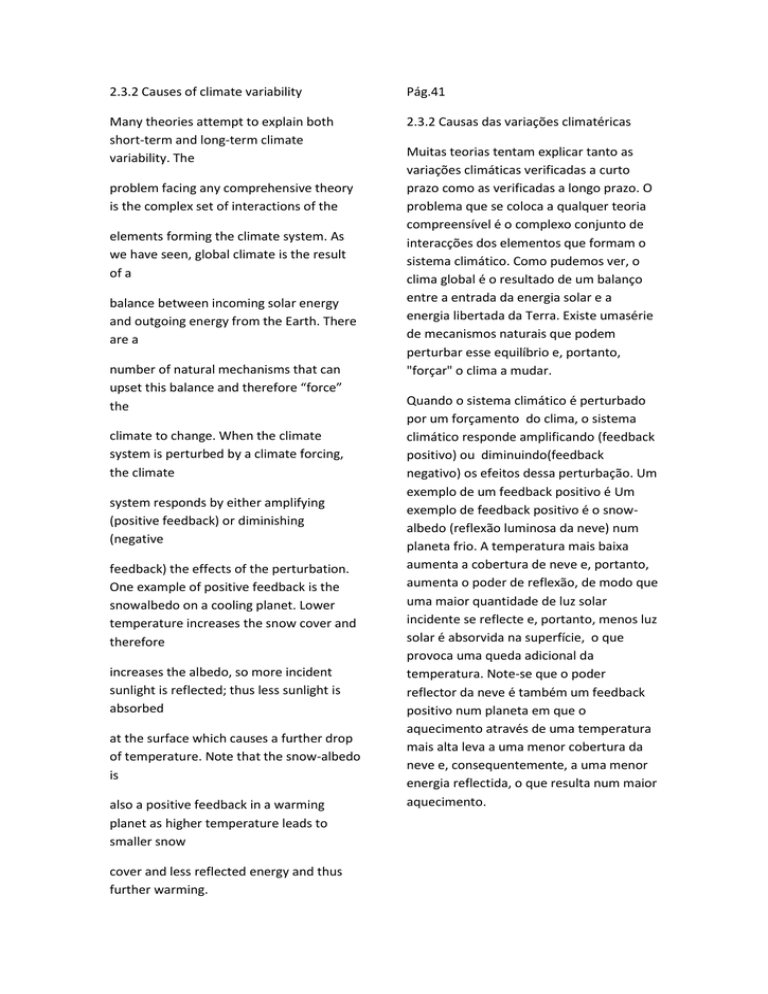
2.3.2 Causes of climate variability
Pág.41
Many theories attempt to explain both
short-term and long-term climate
variability. The
2.3.2 Causas das variações climatéricas
problem facing any comprehensive theory
is the complex set of interactions of the
elements forming the climate system. As
we have seen, global climate is the result
of a
balance between incoming solar energy
and outgoing energy from the Earth. There
are a
number of natural mechanisms that can
upset this balance and therefore “force”
the
climate to change. When the climate
system is perturbed by a climate forcing,
the climate
system responds by either amplifying
(positive feedback) or diminishing
(negative
feedback) the effects of the perturbation.
One example of positive feedback is the
snowalbedo on a cooling planet. Lower
temperature increases the snow cover and
therefore
increases the albedo, so more incident
sunlight is reflected; thus less sunlight is
absorbed
at the surface which causes a further drop
of temperature. Note that the snow-albedo
is
also a positive feedback in a warming
planet as higher temperature leads to
smaller snow
cover and less reflected energy and thus
further warming.
Muitas teorias tentam explicar tanto as
variações climáticas verificadas a curto
prazo como as verificadas a longo prazo. O
problema que se coloca a qualquer teoria
compreensível é o complexo conjunto de
interacções dos elementos que formam o
sistema climático. Como pudemos ver, o
clima global é o resultado de um balanço
entre a entrada da energia solar e a
energia libertada da Terra. Existe umasérie
de mecanismos naturais que podem
perturbar esse equilíbrio e, portanto,
"forçar" o clima a mudar.
Quando o sistema climático é perturbado
por um forçamento do clima, o sistema
climático responde amplificando (feedback
positivo) ou diminuindo(feedback
negativo) os efeitos dessa perturbação. Um
exemplo de um feedback positivo é Um
exemplo de feedback positivo é o snowalbedo (reflexão luminosa da neve) num
planeta frio. A temperatura mais baixa
aumenta a cobertura de neve e, portanto,
aumenta o poder de reflexão, de modo que
uma maior quantidade de luz solar
incidente se reflecte e, portanto, menos luz
solar é absorvida na superfície, o que
provoca uma queda adicional da
temperatura. Note-se que o poder
reflector da neve é também um feedback
positivo num planeta em que o
aquecimento através de uma temperatura
mais alta leva a uma menor cobertura da
neve e, consequentemente, a uma menor
energia reflectida, o que resulta num maior
aquecimento.
All feedback mechanisms operate
simultaneously so that any one of the
agents of change
might interact with another in such a way
that their effects do not merely sum up
(see
Section 2.1)
However, even in the case of no external
forcing the Earth’s climate seems to show a
natural variability as a result of
spontaneous fluctuations due to internal
causes.
These variations may result from changes
in the ocean motions, the atmosphere or
interactions
between the two. Examples of these
fluctuations are the irregular cycling
between warm
(El Niño) and cold (La Niña) phases of the El
Niño Southern Oscillation (ENSO). ENSO
is a quasiperiodic pattern of the ocean
surface temperature in the Pacific off the
South
American Coast. It takes place at irregular
intervals of about five years and it causes
extreme weather such as floods and
droughts.
Todos os mecanismos de feedback operam
simultaneamente pelo que qualquer um
dos agentes de mudança pode interagir
com outro, de tal maneira que os seus
efeitos não se limitam a acumular-se
(verSeção 2.1).
No entanto, mesmo não havendo um
forçamento externo do clima terrestre
parece denotar-se uma variabilidade
natural resultante das flutuações
espontâneas devidas a causas internas.
Essas
Pág 42
variações podem resultar de alterações nos
movimentos do oceano, da atmosfera ou
interacções entre os dois. Exemplos destas
flutuações são o ciclo irregular entre a fase
quente (El Niño) e a fase fria (La Niña) da
Oscilação Sul do El Niño (ENSO). ENSOé um
padrão quasi-periódico da temperatura da
superfície do oceano no Pacífico, ao largo
do sul da Costa Americana. Ela ocorre em
intervalos irregulares de cerca de cinco
anos e provoca climas extremos, como
inundações e secas.
The point is how to determine if internal
variability is enough to explain a climate
change
of the importance of the current global
warming or if it is necessary to include
external
forcings. In this sense, the temperature
record of the last millennium is particularly
important because it gives indications of
the range of natural variability in a period
where
there are enough data to determine the
magnitude of possible forcings.
As we will see in the next section, one way
for evaluating internal variability is to use
global climate models, which show how
the climatic system should evolve when
each
external forcing can be switched to zero.
Alternatively, one can study events in the
climate history trying to assess whether a
climatic change can be explained as a
consequence of an external forcing.
In this section we adopt the second
approach reviewing how changes of
external forcings
may explain observed climatic variations,
with the aim, whenever possible, of
evaluating
if any of these changes is playing a
significant role in the present global
warming.
A questão é como determinar se a
variabilidade interna é suficiente para
explicar uma mudança climática
relativamente ao aquecimento global
actual, ou se é necessário incluir os
«forçamentos» externos.
Neste sentido, o registo da temperatura do
último milénio é particularmente
importante porque dá indicações do
alcance da variabilidade natural num
período em existam dados suficientes para
determinar a magnitude de possíveis
«forcings».
Como veremos na próxima seção, uma
maneira para avaliar a variabilidade interna
é usar modelos climáticos globais, que
mostrem como o sistema climático deve
evoluir quando cada «forçamento»
externo esteja ligado a zero. Por outro
lado, pode-se estudar acontecimentos
relativos à história do clima, tentando
avaliar se uma mudança climática pode ser
explicada como consequência de um
«forçamento» externo.
Nesta seção, vamos adotar a segunda
abordagem, analisando como as mudanças
de forças externas podem explicar as
variações climática observadas, com o
objectivo, sempre que possível, de
avaliarse qualquer uma dessas alterações
está desempenhando um papel
significativo no presente aquecimento
global.

